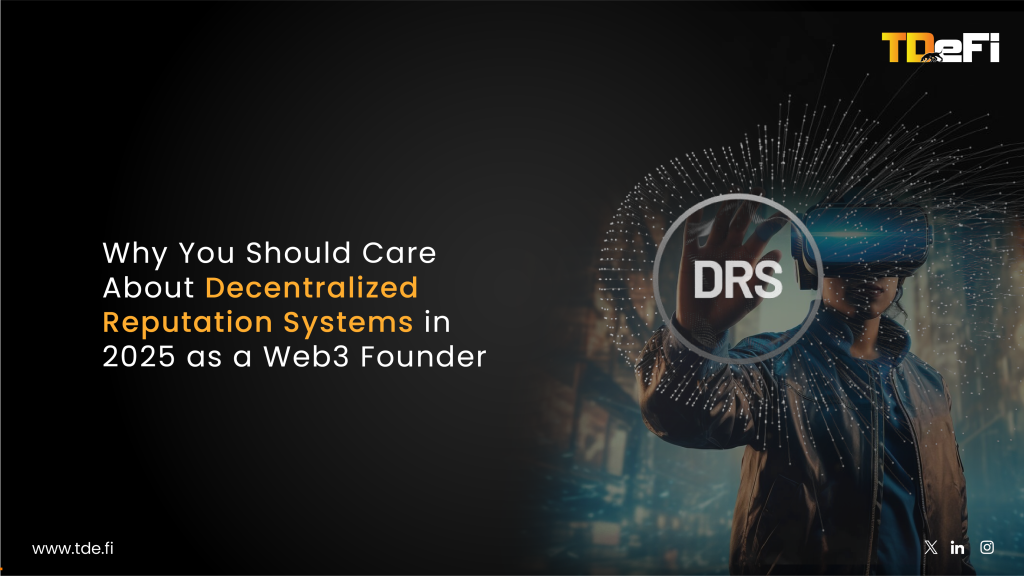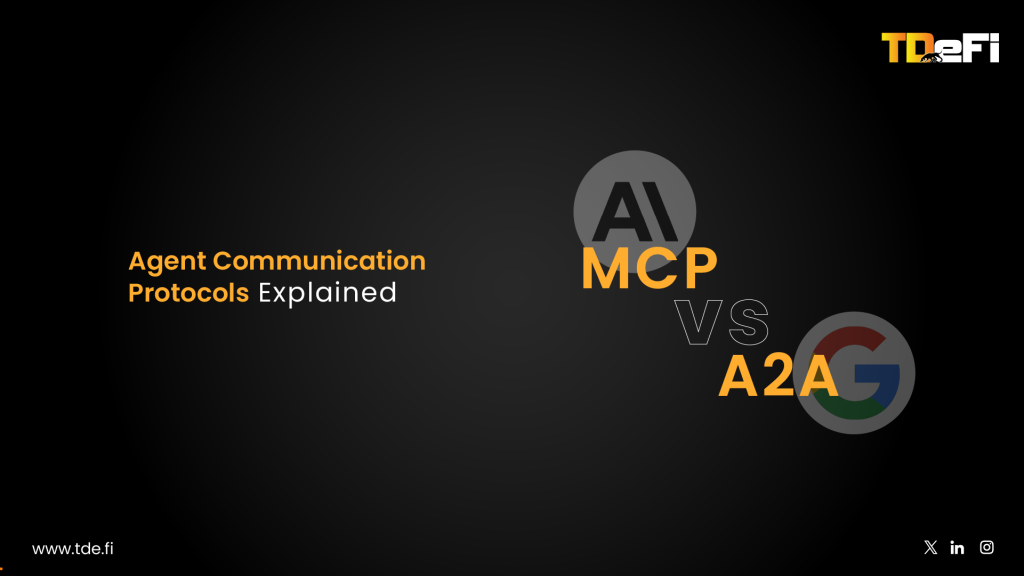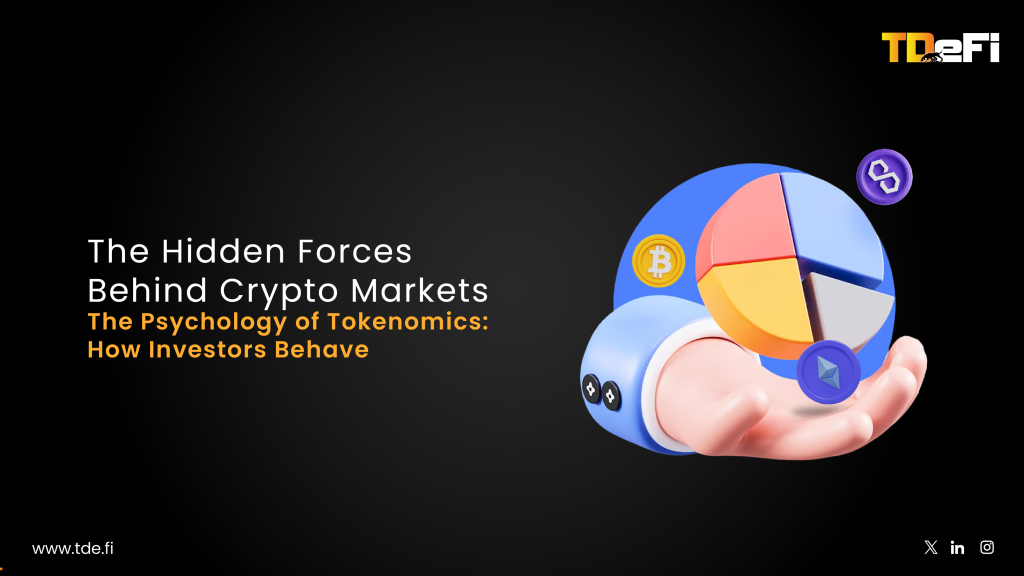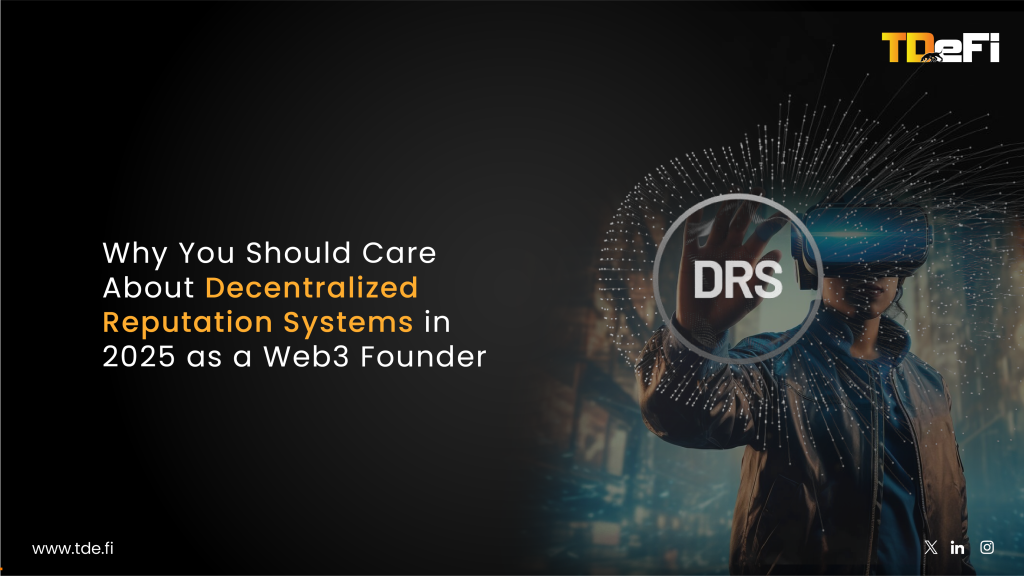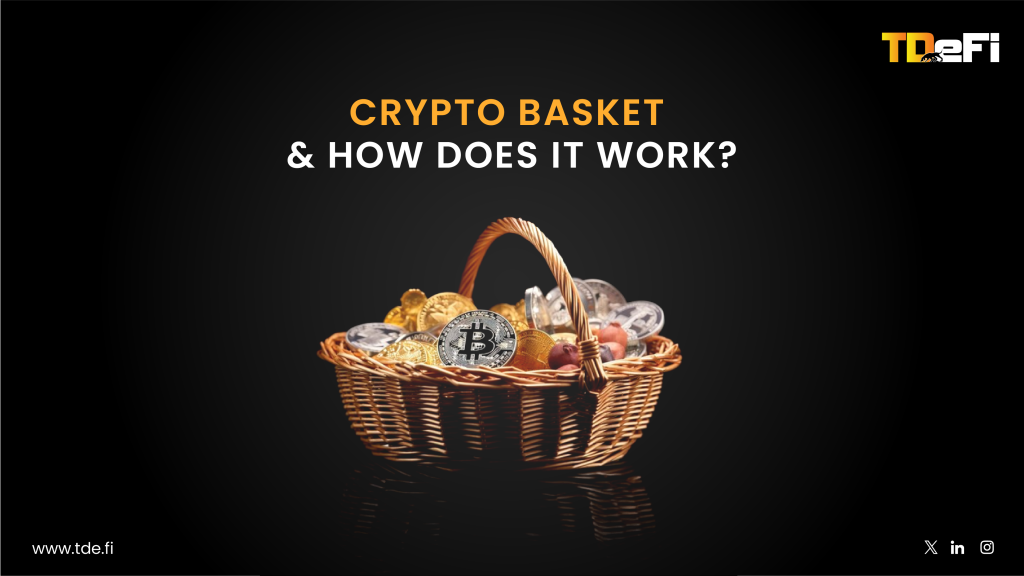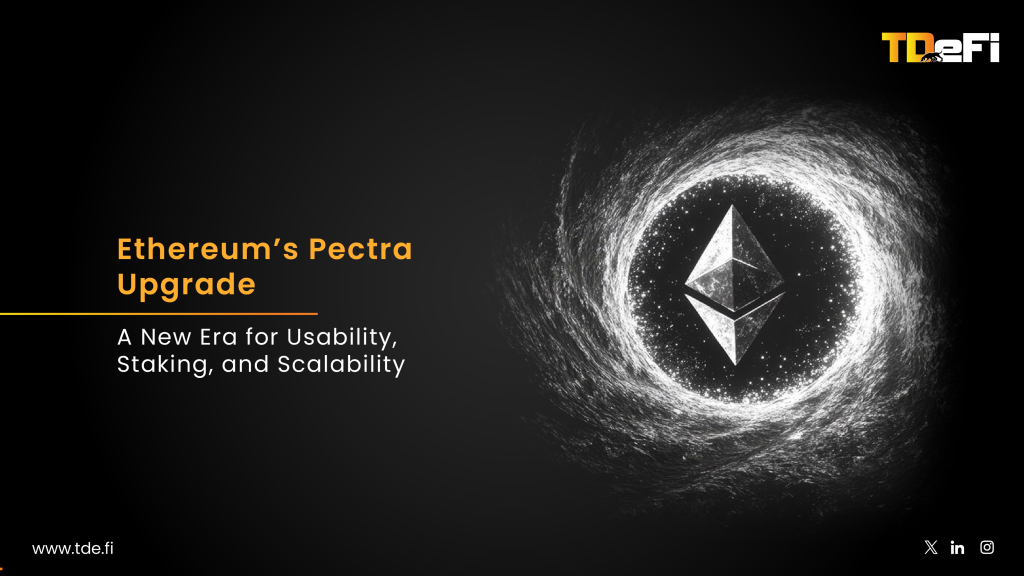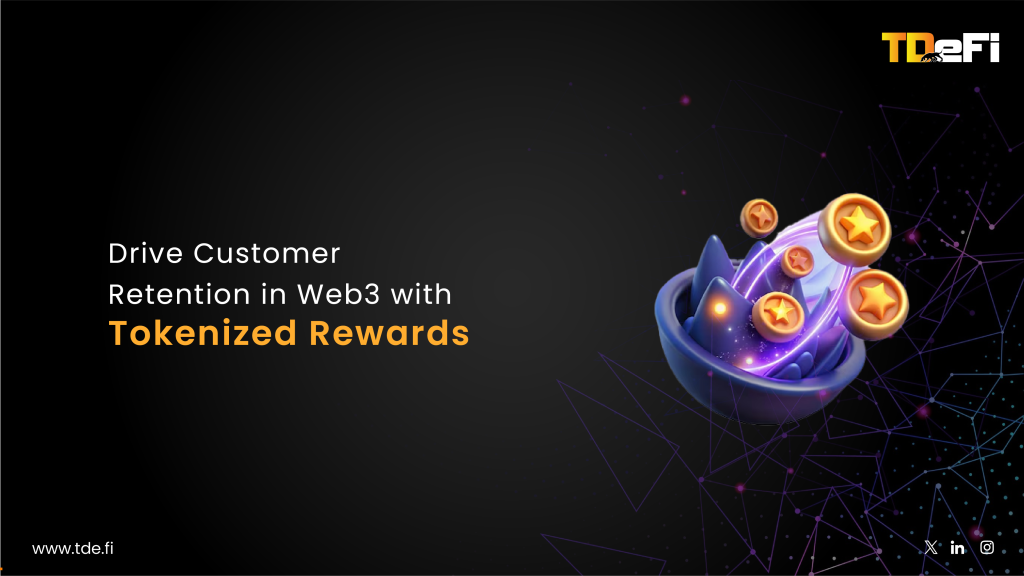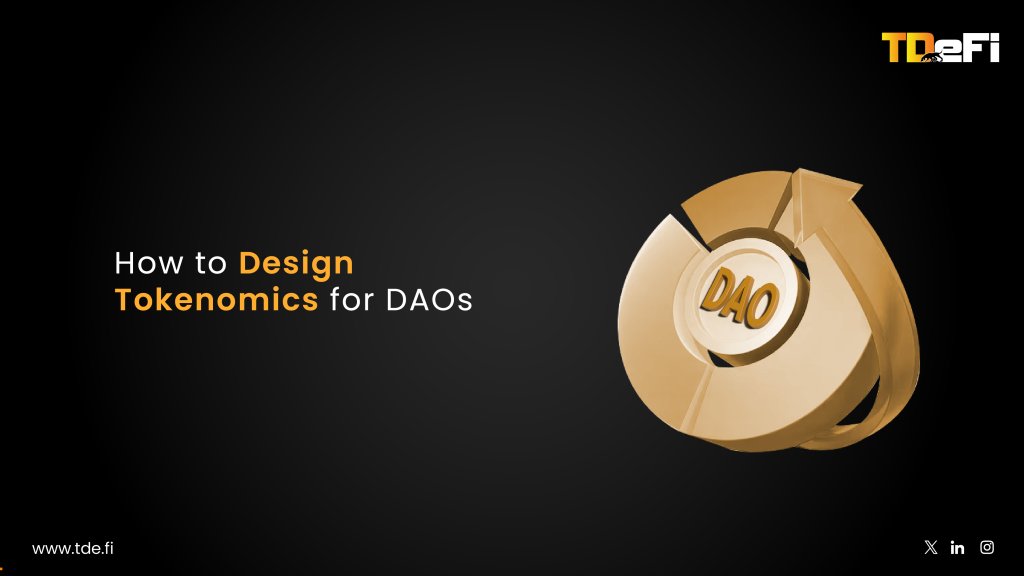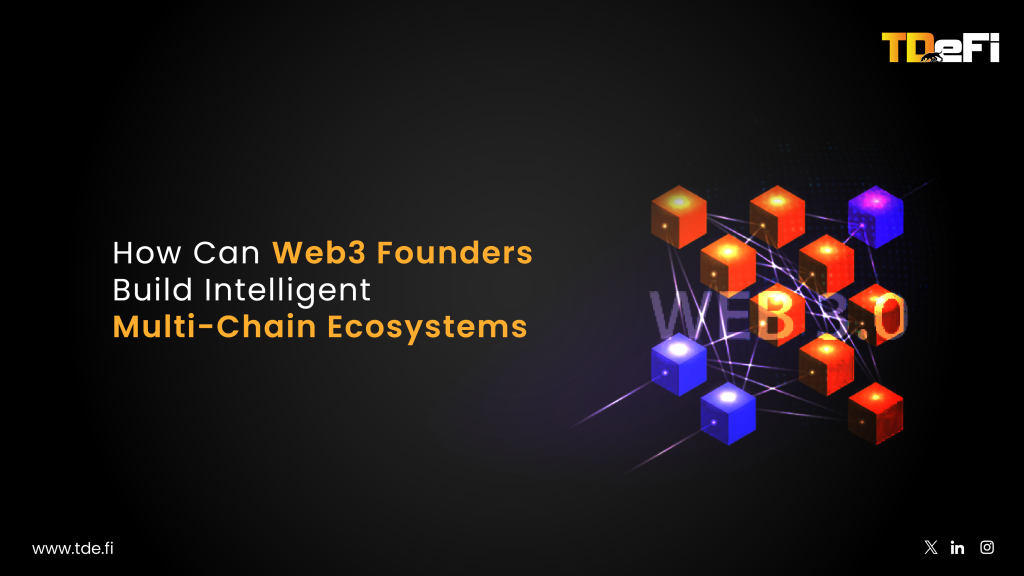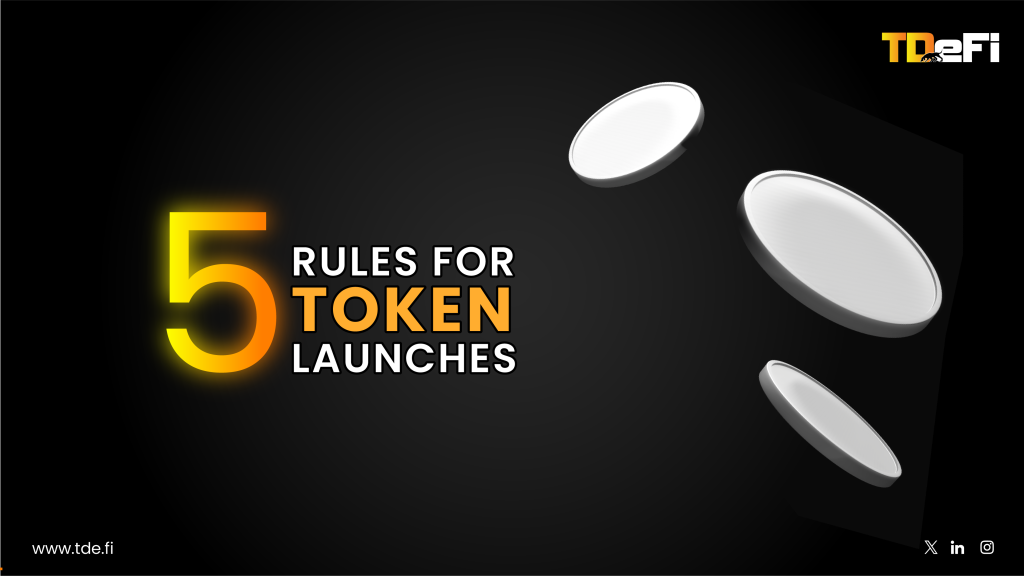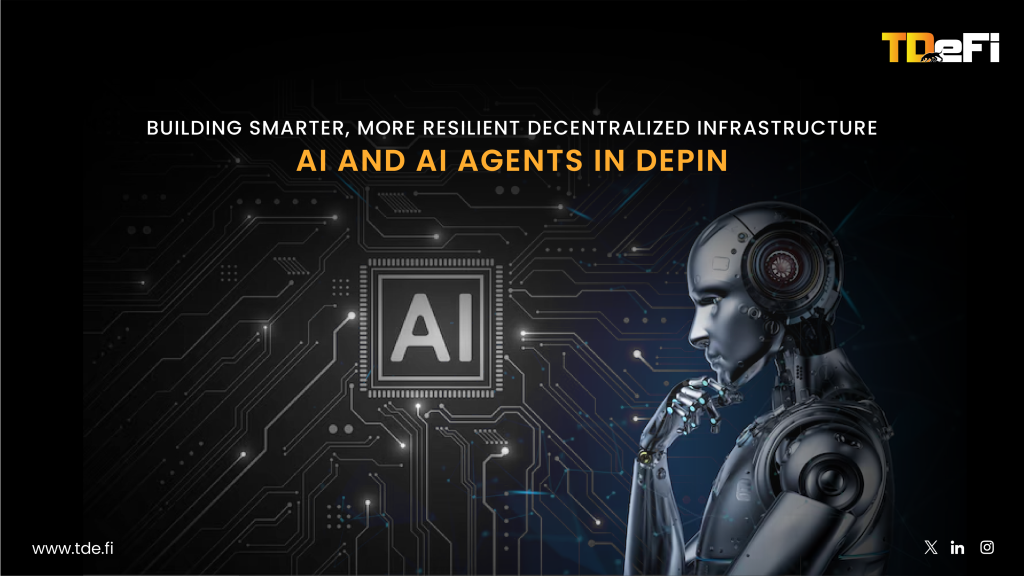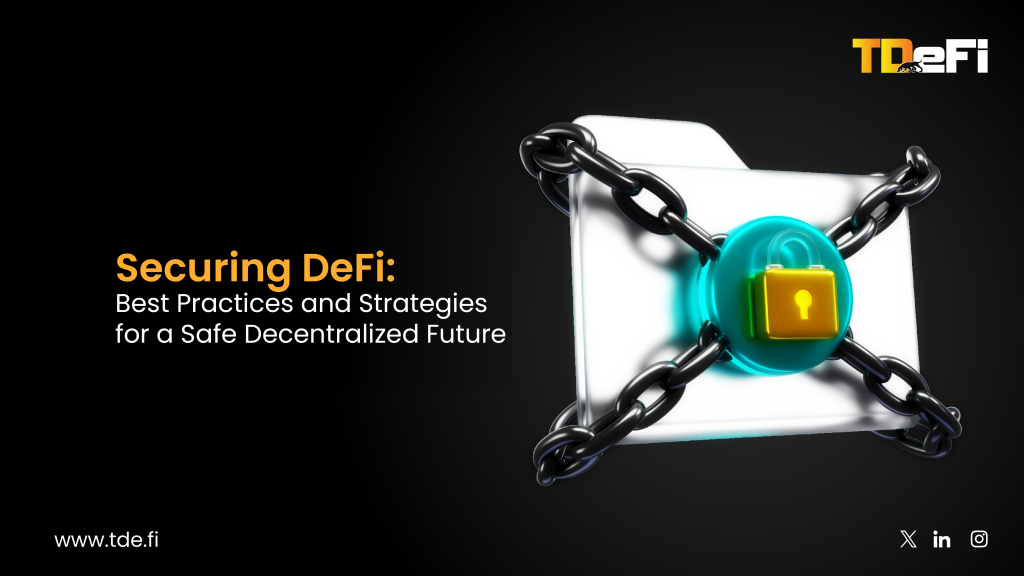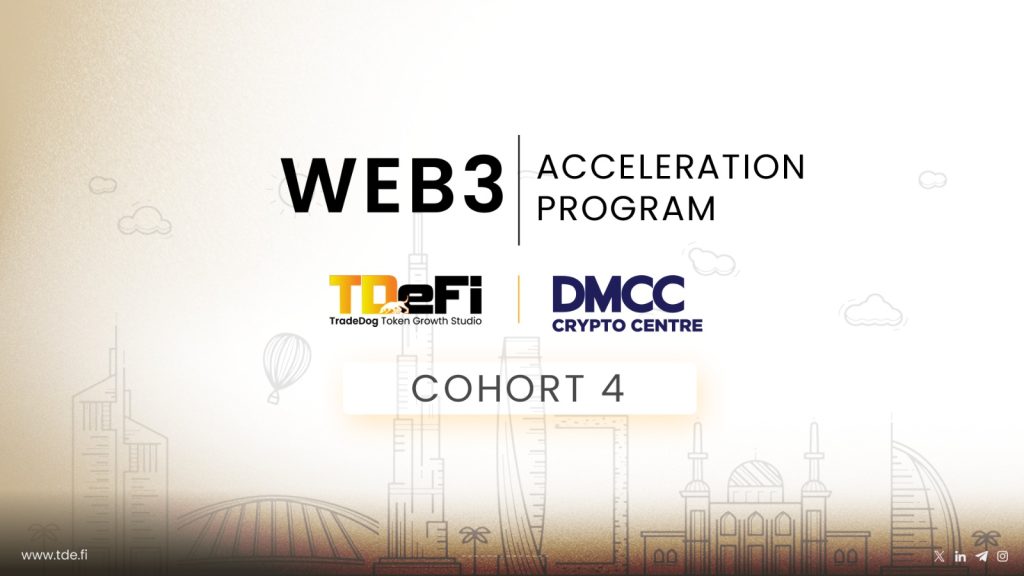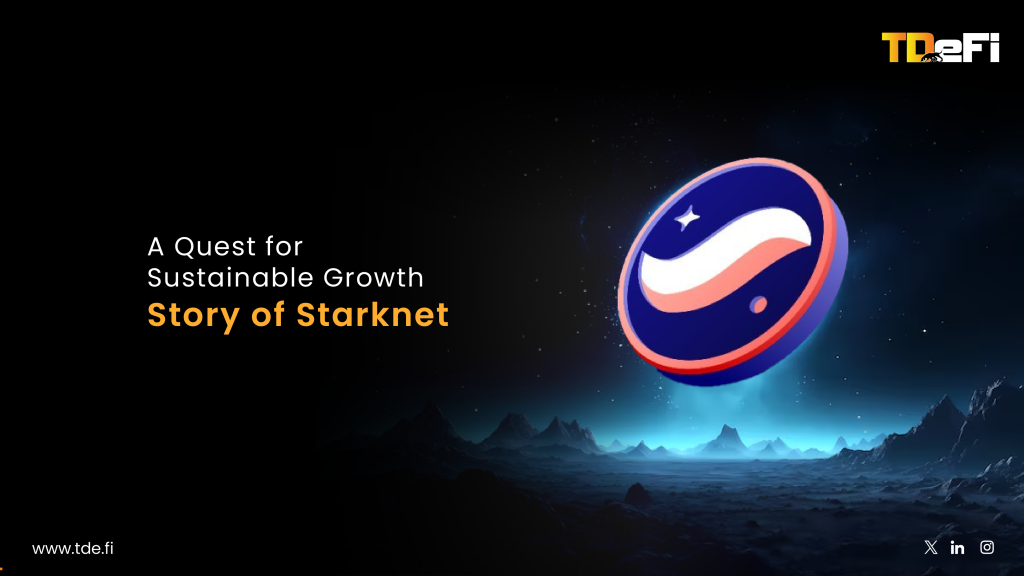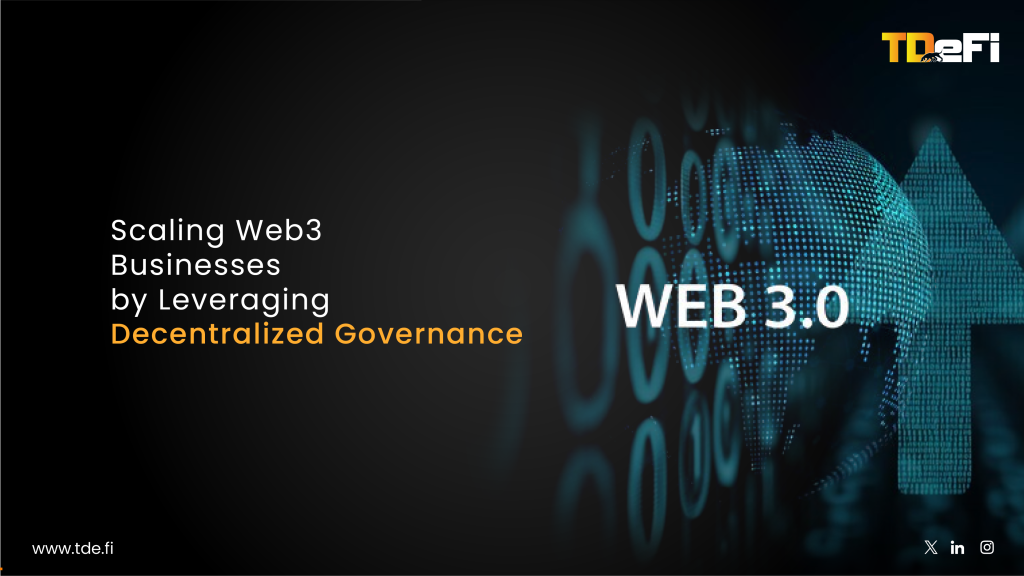TL;DR
User experience (UX) in DeFi has long been complex, fragmented, and intimidating—discouraging mainstream adoption despite the potential of decentralized finance. Intent-based UX is emerging as a game-changer, shifting DeFi from transaction-focused interfaces to goal-oriented experiences. Instead of forcing users to manually explore liquidity pools, bridges, and gas fees, intent-based UX abstracts away complexity, allowing users to state their goal while protocols autonomously execute the optimal path.
For Web3 founders, investors, and builders, intent-based UX represents a paradigm shift in DeFi usability. This blog unpacks how intent-based UX is revolutionizing DeFi, the core mechanics behind it, and what founders need to do to implement more intuitive, accessible, and capital-efficient Web3 applications.
Introduction
Decentralized finance promised financial sovereignty and inclusivity, yet onboarding new users often feels like an arduous task full of technical hurdles. Wallet connections, slippage settings, liquidity pools, and gas fees—each step creates friction that deters mainstream adoption.
DeFi transactions today require users to manually navigate multiple steps across different protocols. A single mistake—such as selecting the wrong bridge or failing to adjust gas fees—can lead to failed transactions or lost funds. The root cause? DeFi interfaces are still built around transactions rather than user intentions.
In contrast, traditional finance (TradFi) mastered UX by focusing on outcomes. When you buy stocks on a brokerage app, you don’t manually select liquidity providers or optimize order routing; the system handles it seamlessly in the background. Intent-based UX brings this level of sophistication to DeFi. Instead of forcing users to deal with blockchain complexities, it enables them to state their goals while smart contracts and automation handle execution behind the scenes.
What Is Intent-Based UX in DeFi?
Intent-based UX reimagines how users interact with decentralized systems by shifting the burden of execution from users to protocols. Instead of requiring users to manually perform each step of a transaction, intent-based systems allow them to express their desired outcome (or “intent”), which is then executed autonomously and optimally by the protocol.
The UX Journey From Transactions to Intentions
| Aspect | Traditional Transaction-Based UX | Intent-Based UX |
| Process | Users must manually select DEXs, compare liquidity pools, adjust slippage settings, and execute swaps. | Users state their goal (e.g., “Swap 500 USDC for ETH at best price”), and protocols handle execution autonomously. |
| Complexity | Requires users to understand AMMs, cross-chain bridges, and gas optimization settings. | Abstracts complexity; users focus on outcomes rather than execution steps. |
| Execution Path | Fragmented; users must navigate multiple protocols manually. | Unified; intent engines determine optimal paths across DEXs, bridges, and fee structures automatically. |
| User Interaction | High friction; users must monitor transactions and adjust parameters frequently. | Low friction; minimal manual interaction with seamless execution behind the scenes. |
| Error Risk | High risk of failed transactions due to gas spikes or liquidity shifts. | Reduced risk; systems dynamically monitor conditions before executing transactions. |
| Customization | Limited to advanced users with technical expertise. | Advanced customization options available without compromising simplicity for beginners. |
Why Intent-Based UX is Transforming DeFi
1. Simplifying Complexity Without Sacrificing Control
DeFi currently demands that users understand AMMs (automated market makers), liquidity pools, cross-chain bridges, gas optimization settings, and slippage tolerances—all of which create barriers for mainstream adoption.
Intent-based UX abstracts these complexities while retaining flexibility for advanced users who want customization (e.g., preferred routes or slippage tolerances). By focusing on outcomes rather than execution steps, it ensures that power remains decentralized while making DeFi accessible even for non-technical users.
2. Reducing Failed Transactions and Gas Fee Wastage
Failed transactions are one of DeFi’s biggest pain points. They often occur due to gas spikes or liquidity shifts during execution. These failures waste funds and discourage new users from engaging with decentralized platforms.
Intent-based systems mitigate these issues by:
- Dynamically monitoring on-chain conditions: Adjusting execution paths based on real-time gas prices and liquidity depth.
- MEV protection mechanisms: Preventing sandwich attacks and optimizing trade efficiency.
- Gas optimization algorithms: Reducing costs by batching transactions or timing executions during low-fee periods.
By ensuring reliable execution every time, intent-based systems make DeFi feel as seamless as TradFi.
3. Unlocking Capital Efficiency Through Better Execution
Liquidity fragmentation across multiple DEXs often prevents users from achieving optimal trade execution in traditional DeFi systems. Intent-based solutions address this by integrating:
- DEX Aggregators + MEV searchers: These tools ensure that swaps occur at the best possible rates across all available liquidity pools.
- Cross-chain routing intelligence: Automatically selecting bridges with lower fees for interoperability between blockchains.
- Batch settlement mechanisms: Reducing costs by bundling multiple transactions into efficient batches.
For users, this means higher profitability with fewer steps.
How Web3 Builders Can Implement Intent-Based UX
To establish thought leadership and provide Web3 builders and founders with unparalleled insights, this section dives deep into the technical and strategic implementation of intent-based UX. By leveraging cutting-edge technologies, real-world examples, and actionable frameworks, Web3 builders can create intuitive, scalable, and user-friendly DeFi platforms that stand out in a competitive market.
1. Define Clear User Intents
The foundation of intent-based UX lies in understanding and defining user goals. Builders must identify the most common intents their target audience will have. These ‘intents’ can range from simple actions like token swaps to complex multi-step operations such as yield farming or cross-chain arbitrage.
Here’s How to Define Intents
- User Research: Conduct surveys and interviews to understand the pain points users face when interacting with DeFi platforms.
- Behavioral Data Analysis: Analyze transaction data to identify recurring patterns in user behavior. For example, Aperture Finance identified liquidity management as a key user goal and built an intent engine around it.
- Categorize Intents: Break down intents into categories such as “swap,” “stake,” “borrow,” or “bridge.” This categorization simplifies the design of the intent engine.
2. Build or Integrate Intent Engines
An intent engine is the core component that interprets user intents and translates them into executable actions. It determines the optimal path for execution by analyzing factors like market conditions, gas fees, and protocol availability.
Key Components of an Intent Engine:
- Expression-to-Intent Translation Layer: Converts user goals into machine-readable intents (e.g., “Swap 1 ETH for USDC at the best rate”).
- Orchestration Layer: Manages interactions between multiple DeFi protocols to execute the intent seamlessly.
- Optimization Algorithms: Ensures efficient execution by dynamically selecting the best liquidity pools, bridges, or staking protocols.
Example: CoW Protocol uses batch auctions to optimize trade execution based on user intents while protecting against MEV attacks. Builders can either develop their own intent engines or integrate existing solutions like CoW Protocol.
3. Abstract Complexity Through Smart Contracts
Smart contracts are pivotal in implementing intent-based UX as they automate transaction execution while maintaining transparency and security.
Steps to Abstract Complexity:
- Modular Smart Contracts: Design modular contracts that handle specific tasks (e.g., token swaps, bridging) and can be combined to execute complex intents.
- Gasless Transactions: Implement meta-transactions using tools like Biconomy, enabling users to approve intents without directly interacting with gas fees.
- Dynamic Execution Paths: Use smart contracts that adapt to changing market conditions (e.g., fluctuating gas prices or liquidity depth) in real-time.
By abstracting complexity through smart contracts, builders can create platforms where users focus on outcomes rather than technical processes.
4. Automate Cross-Chain Transactions
Cross-chain interoperability is a critical challenge in DeFi, as users often need to bridge assets across multiple blockchains manually. Intent-based UX automates this process by leveraging interoperability protocols.
How to Automate Cross-Chain Transactions
- Use protocols like LayerZero or Axelar for seamless cross-chain messaging and asset transfers.
- Implement routing algorithms that dynamically select the most efficient bridge based on fees, speed, and network congestion.
- Provide users with a unified balance view across chains to eliminate asset fragmentation (e.g., Arcana Network’s Unified Wallet).
Example: Across Protocol simplifies cross-chain bridging by allowing users to state their intent (e.g., “Bridge 1 ETH from Ethereum to Arbitrum”), while its backend automation selects the best route.
5. Integrate AI-Powered Solvers
AI plays a transformative role in enhancing intent-based UX by interpreting user goals more effectively and optimizing execution paths.
Applications of AI in Intent-Based Systems
- Natural Language Understanding (NLU): AI-powered chatbots can interpret user intents expressed in natural language (e.g., “I want to earn yield on my USDC”) and translate them into executable actions.
Example: Aperture Finance uses GPT-like AI models to process liquidity management goals.
- Predictive Analytics: AI algorithms predict gas price fluctuations or liquidity shifts, ensuring optimal execution timing.
- Personalized Recommendations: AI suggests tailored actions based on user behavior (e.g., recommending staking opportunities with higher APYs).
Builders can integrate AI solvers into their platforms using frameworks like OpenAI’s API or custom machine learning models trained on blockchain data.
6. Prioritize Security and Transparency
Security is non-negotiable when implementing intent-based systems, as they handle complex multi-step transactions involving significant capital.
Best Practices for Security
- Audit Smart Contracts: Regularly audit all smart contracts through reputable firms like CertiK or OpenZeppelin.
- Open Source Execution Logs: Allow users to verify how their intents were executed by providing transparent logs of every step.
- MEV Protection Mechanisms: Shield users from MEV attacks using batch settlement techniques (e.g., CoW Protocol) or private transaction relays (e.g., Flashbots).
Transparency builds trust among users, ensuring they feel confident using your platform.
7. Focus on Outcome-Oriented Design
Intent-based UX revolves around delivering outcomes rather than requiring users to manage processes manually. Builders must design interfaces that make this shift intuitive.
Design Principles for Outcome-Oriented Interfaces
- Use plain language prompts (e.g., “What would you like to do?”) instead of technical jargon.
- Display estimated outcomes before execution (e.g., expected token amounts after a swap).
- Offer advanced settings for power users without overwhelming beginners.
Projects like UniswapX exemplify this principle by shifting from AMM-based swapping to intent-driven order execution.
8. Monetize Through White-Label Solutions
For builders looking to scale their impact beyond a single platform, white-label solutions offer a lucrative opportunity.
How White-Label Solutions Work:
- Develop customizable frameworks where businesses can define specific intents relevant to their niche markets (e.g., real estate tokenization or supply chain finance).
- License these frameworks as white-label products that other projects can integrate into their platforms.
Example: Blockchain App Factory offers white-label intent-based DeFi solutions tailored for various industries.
This approach not only generates revenue but also accelerates the adoption of intent-based systems across Web3 ecosystems.
Real-World Examples of Intent-Based Systems in DeFi
1. CoW Protocol
Problem: MEV (Maximal Extractable Value) attacks and fragmented liquidity deterred institutional participation in decentralized trading. MEV exploits siphon value from traders, reducing trust and efficiency in DeFi markets.
Solution: CoW Protocol uses batch auctions and solver networks to protect users from MEV attacks while aggregating liquidity across multiple sources. By batching transactions, CoW Protocol minimizes opportunities for front-running while optimizing execution.
Impact: CoW Protocol reduced MEV by up to 90% and ranked among the top DEX aggregators, holding a 26% market share as of Q4 2024 .
2. 1inch Fusion
Problem: High gas fees and manual routing limited cross-chain adoption, making DeFi transactions expensive and inefficient for users.
Solution: 1inch Fusion introduced Dutch auctions and resolver competition to optimize gas costs and pricing. Dutch auctions allow users to bid for the best price execution while resolver competition ensures efficient routing across chains.
Impact: 1inch Fusion pioneered gasless transactions with built-in MEV protection, significantly improving user experience.
3. Aperture Finance
Problem: DAOs wasted resources on manual yield management, leading to inefficiencies in treasury operations and reduced returns on capital deployment.
Solution: Aperture Finance leverages AI to automate compounding and rebalancing across lending platforms like Aave and Compound. This reduces manual intervention while optimizing yield strategies for DAO treasuries.
Impact: Aperture streamlined treasury management for DAOs, enabling more efficient capital allocation.
4. Across Protocol
Problem: Slow and costly asset transfers between chains created friction for users needing fast cross-chain liquidity solutions.
Solution: Across Protocol uses UMA’s optimistic oracle and competitive relayers to enable sub-minute bridging between chains at low costs. The optimistic oracle ensures accurate pricing while relayers compete to provide the fastest execution.
Impact: Across Protocol processed over $1 billion in cumulative volume as of 2024, becoming one of the most efficient cross-chain bridges
5. UniswapX
Problem: Retail traders often faced poor pricing due to fragmented liquidity across AMMs (Automated Market Makers). This fragmentation led to inefficiencies in price execution for smaller trades.
Solution: UniswapX aggregates liquidity from DEXs (Decentralized Exchanges), CEXs (Centralized Exchanges), and OTC desks using Dutch auctions to optimize pricing execution through solver competition.
Impact: UniswapX improved price execution significantly by leveraging solver competition, enhancing liquidity aggregation across multiple sources
Closing Thoughts
The promise of DeFi was never just decentralization. It was freedom, financial sovereignty, and access without gatekeepers. But somewhere along the way, that promise became tangled in complexity. Instead of breaking barriers, we built systems so intricate that only the most tech-savvy users could understand them.
Intent-based UX is about returning to first principles: empowering users, not overwhelming them. By shifting the focus from how a transaction happens to what the user wants to achieve, builders are removing friction without compromising decentralization. They are creating systems that speak not only the language of liquidity pools and gas fees but also the language of real people with real goals.
For Web3 founders, this signals a fundamental shift in how DeFi applications must evolve. Projects that embrace intent-based UX will seize the next wave of adoption, onboarding not just crypto-natives but millions of users who have been waiting for DeFi to make sense.
At TDeFi, we work with Web3 startups to push the boundaries of what’s possible. Whether you are building the next-gen DEX, cross-chain bridge, or DeFi aggregator, we help you design intuitive, future-proof user experiences that drive real adoption and sustainable growth.
If you are ready to build DeFi products that users actually understand and love, let’s build the future of decentralized finance together.











